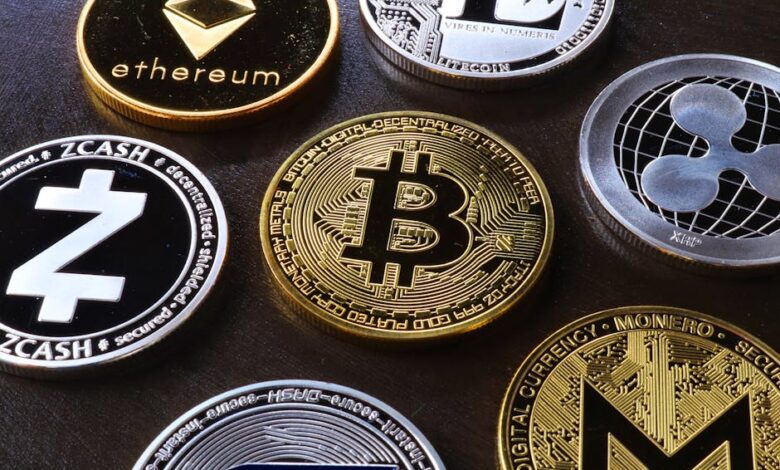**”Unearthing Wealth: A Journey Through Gold Trade Routes from Ancient Times to Modern Investment Trends”**

**Introduction: The Timeless Allure of Gold Trade Routes**
Gold has captivated humanity for centuries, serving not only as a symbol of wealth and power but also as a cornerstone of global commerce. From the ancient Silk Road to the bustling exchanges of modern financial markets, the pathways for gold trade have evolved dramatically, reflecting shifts in economic paradigms and cultural values. This article delves into the intricate history of gold trade routes, tracing their evolution from ancient paths that facilitated the exchange of gold coins and collectibles to contemporary markets where gold is viewed as a safe haven asset amidst economic uncertainties.
As we navigate today's gold investment landscape, understanding current gold market trends becomes essential. With fluctuating gold prices influenced by factors such as inflation, central banks' gold holdings, and the rise of gold ETFs, investors must stay informed to make strategic decisions. Moreover, the future of gold trade hinges on sustainable gold mining practices, as the industry grapples with environmental concerns and the increasing importance of gold recycling.
Join us as we explore the historical significance of gold trade routes, analyze modern market dynamics, and discuss sustainable practices that will shape the future of gold production. Whether you are a seasoned investor in gold bullion or simply intrigued by the allure of luxury gold jewelry, this comprehensive guide will provide valuable insights into the multifaceted world of gold commerce.
- 1. **The Evolution of Gold Trade Routes: From Ancient Paths to Modern Markets**
- – Explore the historical significance of gold trade routes and their impact on global commerce.
- 2. **Gold Market Trends: Navigating Today’s Gold Investment Landscape**
1. **The Evolution of Gold Trade Routes: From Ancient Paths to Modern Markets**
The trade of gold has a long and illustrious history, evolving significantly from ancient routes to contemporary markets. In ancient times, gold was highly sought after for its beauty and rarity, leading to the establishment of trade routes that connected civilizations. The famous Silk Road, for example, facilitated the exchange of gold between the East and West, while the trans-Saharan routes enabled the trade of gold from West Africa to Mediterranean markets. These pathways not only helped in the exchange of gold coins and jewelry but also established a foundation for future gold market trends.
As societies progressed, the importance of gold only increased. The discovery of gold mining techniques and the subsequent development of gold production led to new opportunities for investment. Central banks began accumulating gold reserves as a means of stabilizing their currencies under the gold standard, further cementing gold's role as a safe haven asset. In the modern era, gold investment has taken on new forms, including gold ETFs and gold futures, providing investors with diverse options to engage in the gold market without needing to hold physical gold.
Today, the gold trade is a complex global network influenced by various factors such as gold prices, gold recycling, and sustainable gold mining practices. With rising concerns about ethical sourcing, the market has seen a significant shift towards luxury gold products that prioritize sustainability. Gold technology has also transformed the way gold is refined and processed, allowing for greater efficiency and lower costs in gold production.
Moreover, the rise of gold smuggling poses challenges to the legitimacy of gold trade and highlights the need for stringent regulations. The interplay between gold and cryptocurrency has opened new avenues for investment, with many viewing digital currencies as a modern alternative to traditional gold coins and collectibles. As global gold demand continues to fluctuate, market analysis becomes crucial for understanding gold and inflation dynamics, helping investors make informed decisions regarding their gold investment strategies.
From ancient trade routes to the modern complexities of the gold market, the evolution of gold commerce reflects its enduring value and significance across cultures and economies. Whether as a physical asset like gold bullion and bars or as an investment vehicle in the form of futures and ETFs, gold remains a cornerstone of financial stability and wealth preservation.
– Explore the historical significance of gold trade routes and their impact on global commerce.
Gold trade routes have played a pivotal role in shaping global commerce throughout history. As societies evolved, the demand for gold surged, driven by its intrinsic value, aesthetic appeal, and role as a safe haven asset during times of uncertainty. Historically, gold was not just a form of currency; it symbolized wealth and power, influencing trade dynamics across continents.
The emergence of ancient trade routes, such as the Silk Road and the Trans-Saharan trade networks, facilitated the exchange of gold alongside other precious commodities. Merchants transported gold coins, bullion, and jewelry, which became vital for economies, particularly in regions rich in gold reserves, such as West Africa and the Middle East. The trade of gold contributed to the establishment of powerful empires and influenced global market trends, laying the groundwork for modern financial systems.
During the Middle Ages, the gold standard became prevalent, further solidifying gold's status as a cornerstone of global trade. Nations began to back their currencies with gold reserves, promoting stability and trust in the monetary system. This era saw the rise of central banks, which accumulated gold to manage economic fluctuations and inflation. As a result, the relationship between gold and currency became deeply intertwined, impacting gold prices and shaping market analysis.
In contemporary times, gold continues to hold significant importance as a commodity. Modern technology has made gold mining more efficient, while sustainable gold mining practices have emerged to address environmental concerns. The gold market has evolved with the introduction of financial instruments like gold ETFs and gold futures, allowing investors to gain exposure to gold without the need for physical gold ownership.
Gold recycling has also gained traction, as the demand for luxury gold jewelry and collectibles increases. Investors now view gold coins and bullion as viable options for gold investment, particularly during economic downturns. The rise of gold smuggling and illicit trade highlights the ongoing global demand for gold, revealing the lengths to which individuals and entities will go to acquire this precious metal.
Moreover, the relationship between gold and cryptocurrency has sparked new discussions about investment strategies. As gold remains a reliable store of value, many investors are exploring ways to balance their portfolios with both gold and digital assets. Overall, the historical significance of gold trade routes has left an indelible mark on global commerce, illustrating gold's enduring value and its multifaceted role in the economy.
2. **Gold Market Trends: Navigating Today’s Gold Investment Landscape**
In recent years, the gold market has experienced a dynamic shift influenced by various economic factors and investor behaviors. As a safe haven asset, gold remains a popular choice for those navigating uncertainty in global markets. Investors are increasingly turning to gold investment as a hedge against inflation, with many viewing it as a reliable store of value amidst fluctuating currencies and economic instability.
Gold prices have shown resilience, with trends indicating a growing global demand for both physical gold and gold-backed financial instruments, such as gold ETFs and gold futures. The rise of gold technology has also made it easier for investors to access and trade gold, further enhancing its appeal. For example, advancements in gold refining and recycling processes have increased the availability of refined gold, allowing for more sustainable gold mining practices.
Central banks around the world continue to bolster their gold reserves, further driving gold market trends. This accumulation is often seen as a strategic move to diversify national reserves and mitigate risks associated with economic downturns. The increase in central banks’ gold holdings is a clear indication of the asset's enduring value and importance in the global financial system.
Moreover, the luxury gold market, including gold jewelry and gold collectibles, continues to thrive, with consumers showing a preference for high-quality gold items. This trend is complemented by the growing interest in gold coins investing, where collectors seek valuable coins not only for their aesthetic appeal but also as a viable investment.
As the gold market evolves, the impact of gold and cryptocurrency cannot be overlooked. Some investors are exploring the symbiotic relationship between these two assets, using gold as a foundation for diversifying their portfolios. This blend of traditional and modern investment strategies highlights the versatility and continued relevance of gold in today’s financial landscape.
With gold smuggling and illegal trade posing challenges to the market, efforts for regulation and transparency in gold trade are becoming increasingly vital. Sustainable gold mining practices also play a crucial role in addressing environmental concerns, ensuring that gold production meets ethical standards while satisfying global demand.
In summary, the current gold market analysis reveals a robust and multifaceted investment landscape. With gold bullion, gold bars, and the allure of gold coins all contributing to its appeal, investors are well-advised to stay informed about gold market trends and consider the potential benefits of incorporating gold into their investment strategies.
In conclusion, the journey of gold trade routes from ancient pathways to contemporary markets illustrates the enduring significance of this precious metal in global commerce. As we have explored, gold has not only served as a currency and a standard of value but has also evolved into a safe haven asset amid fluctuating economic conditions. Today, the gold investment landscape is shaped by market trends that reflect a complex interplay of factors, including inflation, central bank policies, and global gold demand.
Investors today can navigate this landscape through various avenues, such as gold ETFs, gold futures, and physical gold investments. The rise of gold recycling and sustainable gold mining practices is also noteworthy, as they highlight a growing commitment to ethical sourcing and environmental responsibility. Furthermore, the integration of technology in gold refining and production processes continues to enhance efficiency, driving down costs and increasing accessibility for collectors and investors alike.
As we look to the future, understanding the dynamics of gold prices and market analysis will be crucial for anyone interested in gold coins, gold bullion, and luxury gold collectibles. The potential intersection of gold and cryptocurrency also presents intriguing prospects for the evolution of gold trade. With gold's historical role as a store of value, it remains a pivotal component of diversified investment portfolios, particularly in times of economic uncertainty.
Ultimately, whether through investing in gold bars, coins, or jewelry, or by following gold market trends, stakeholders can appreciate the multifaceted nature of gold as both a commodity and a cultural artifact. The journey of gold continues to capture our imagination, reflecting our values and aspirations throughout history and into the future.
### References
*(Include relevant sources and citations here)*





